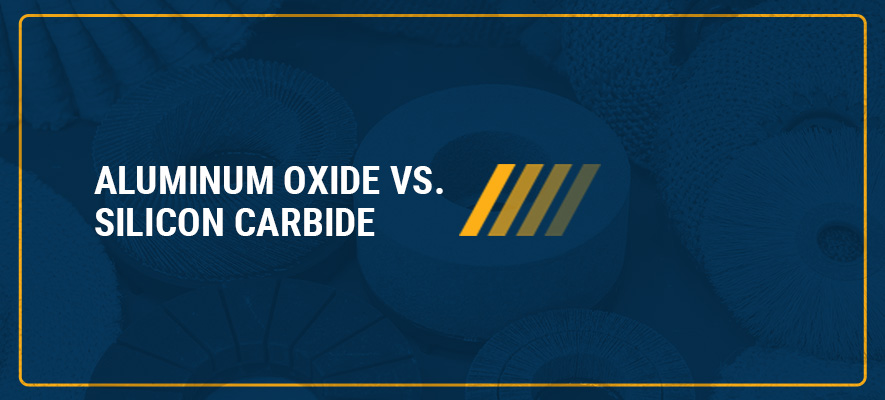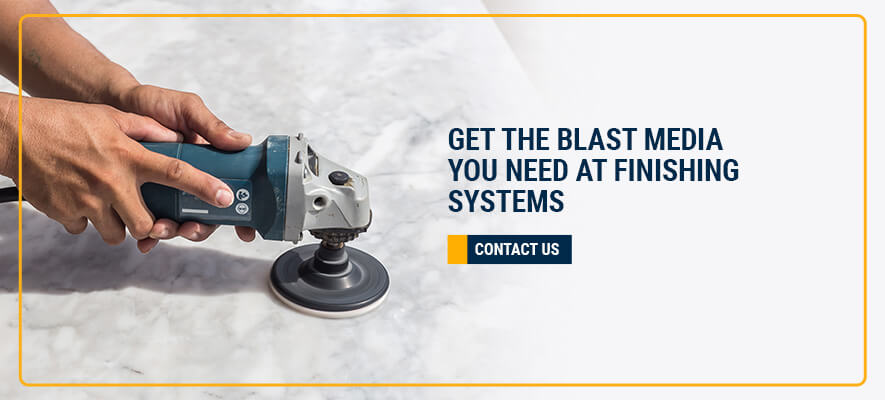Aluminum Oxide vs. Silicon Carbide

Aluminum Oxide vs. Silicon Carbide
Updated: November 24, 2023In industrial and finishing operations, blasting media plays a crucial role in stripping, cleaning, and polishing surfaces to achieve a professional finish. Among the many options available, aluminum oxide and silicon carbide are two of the most commonly used abrasives, especially for metal and wood applications. While both are cost-effective and versatile, they each have unique properties that make them more suitable for certain tasks than others.
Aluminum Oxide Abrasives
Aluminum oxide is a popular choice when working with painted surfaces, wood, and various metals. It’s known for being durable, affordable, and long-lasting, making it ideal for high-volume production. This abrasive comes in three main colors—pink, white, and brown—each with specific uses depending on the material and desired finish.
Pink and White
The pink and white variants of aluminum oxide produce smoother finishes compared to the brown variety. White aluminum oxide is particularly effective for use on wood and lacquered surfaces because it generates less heat, which is beneficial for precision work. Pink aluminum oxide is best suited for softer woods and grinding or sharpening tasks. However, these types tend to be less durable than their brown counterparts.
Brown
Brown aluminum oxide is ideal for harder materials and offers excellent durability due to its semifriable grain structure. As the grains break down during use, they sharpen themselves, allowing for consistent performance over time. This makes it highly efficient for removing large burrs and leaving behind finer grains for a smoother finish. Additionally, brown aluminum oxide is easily recyclable, reducing long-term costs and making it the most economical option for many applications.
Silicon Carbide Abrasives
Silicon carbide is known for its sharpness and extreme hardness, making it an excellent choice for delicate materials such as glass, ceramics, stone, marble, and certain plastics. Its pointed edges allow for multiple uses before replacement, especially on softer surfaces. It also provides good etching capabilities, preparing surfaces for coatings or further finishing work.
However, silicon carbide's hardness can lead to faster wear when used on harder materials like steel. It’s not typically recommended for wood or high-tensile strength metals due to the risk of excessive damage. Despite this, its versatility allows it to be used in both direct-pressure and suction-based systems, and it can even be combined with aluminum oxide for optimal results in finishing operations.
Silicon carbide is also safe for use in wet or volatile environments, as it produces no static electricity and has minimal magnetic properties. It’s available in both friable and non-friable forms, offering flexibility in application and wear resistance.
Which is Better for Grinding Steel?
When it comes to grinding steel, aluminum oxide is generally the better choice. Although silicon carbide is harder, it’s more brittle and tends to wear out quickly on a hard surface like steel. Using silicon carbide on steel may require multiple passes to achieve any noticeable result, making it inefficient for this task.
Brown aluminum oxide, in particular, is well-suited for grinding steel due to its durability and ability to provide a smooth finish. For finer results, you might follow up with pink aluminum oxide to refine the surface further.
Which is Better for Grinding Aluminum?
Aluminum is a softer metal, so it benefits from a combination of aluminum oxide and silicon carbide. Silicon carbide is ideal for low-tensile strength metals like aluminum because it reduces heat generation while still delivering a uniform finish. White aluminum oxide is often preferred for aluminum surfaces due to its precision and lower heat output.
A common approach is to start with aluminum oxide for general material removal and then switch to silicon carbide for a polished finish. This method helps extend the life of the more delicate silicon carbide particles while achieving the desired level of refinement.
Choosing Between Aluminum Oxide and Silicon Carbide
The decision between aluminum oxide and silicon carbide depends largely on the material you're working with and the desired outcome. Silicon carbide is ideal for non-metallic or low-tensile strength materials, while aluminum oxide is better suited for high-tensile strength metals like steel, bronze, and aluminum alloys.
For precision work, using a combination of both abrasives can yield the best results. This approach is commonly used in aluminum grinding and is also beneficial for woodworking projects where a balance between efficiency and finish quality is needed.

Get the Blast Media You Need at Finishing Systems
If you’re looking for reliable and high-quality blasting media, Finishing Systems has you covered. We offer a wide range of aluminum oxide and silicon carbide products, including friable, semi-friable, and standard varieties to suit different applications. Whether you're stripping, cleaning, or polishing, our team can help you choose the right abrasive for your needs.
Don’t hesitate to reach out to us today to learn more about our products and how we can support your finishing goals.
Fishing Rack,Fishing Rod Holders,Fishing Rod Rack,Fishing Pole Rack
Suzhou Sikor Industry Co., Ltd. , https://www.sikor-group.com